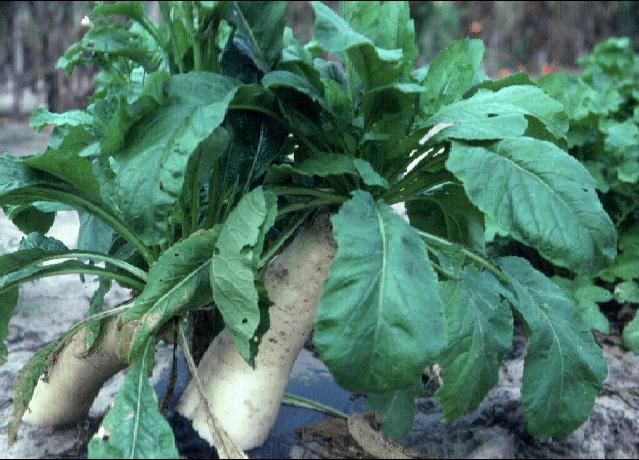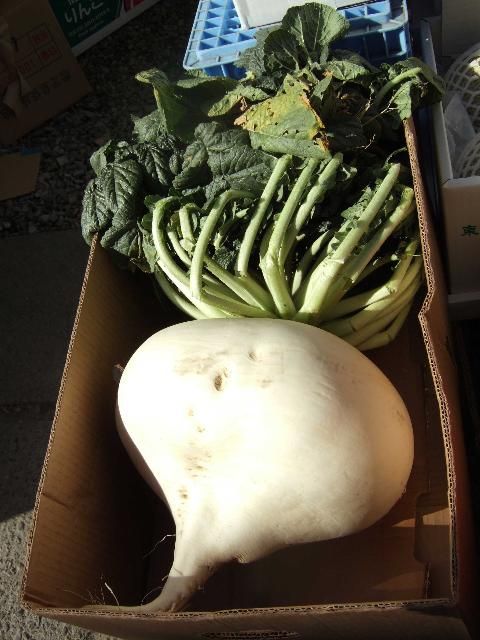Radish, Chinese—Raphanus sativus L.1
The Chinese radish is also known as daikon, Japanese radish, Oriental radish, and winter radish. Chinese radish originated in Asia, as did the common spring or summer radish. Chinese radishes have extremely large roots, some weighing up to 100 pounds. Most are in the 10–20 pound class at full maturity. These big, late maturing radishes were known in Europe much earlier than the smaller kinds. Chinese radishes grown in Florida vegetable garden soils often reach 20 or more pounds.

Credit: James M. Stephens, UF/IFAS
Description
It is quite common for Chinese radishes to have a leafspread of more than 2 feet. The leaves differ from spring radish types by being greatly notched and spreading from the tops of roots in a rosette fashion. Some varieties form large round to top-shaped roots, while others are elongated and cylindrical in shape. Some commonly available varieties offered by United States seed companies are 'Chinese Rose' (round), 'Chinese White' (cylindrical), and 'Celestial' (same as 'Chinese White').

Credit: Sakurai Midori, CC BY 2.5
Culture
Chinese radishes are seldom grown in Florida gardens, but are grown by a handful of commercial growers of oriental vegetables. Culture is quite similar to that for the common radish. Seeds should be planted ¾ inch deep in the fall (September through October) so that the roots enlarge in the cool months.
Because of the size of the mature plants, they should be spaced from 4-6 inches in rows spaced 3 feet apart. To accommodate the large root size, plant on high raised beds fortified with liberal amounts of organic matter (compost). At each cultivation, work the soil around the root higher and higher as it grows. Some of these roots are 18-24 inches in length, so they require a loose, friable soil. It is interesting that these large, long roots often protrude farther above the soil line than into the soil.
Use
Chinese radishes take up to 6 months to reach full size. However, most reach best usable size in 60 or 70 days. They are still tender and edible even when quite large, although when overmature they become pungent and pithy. Varieties vary in degree of pungency, but all tend to have less pungency and better quality during cooler months. Unlike spring radishes, this type of radish is usually cooked rather than eaten fresh. As a cooked vegetable, it is a major food item in Asia and in the United States for Asians.


